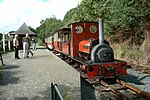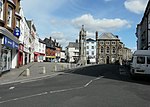St Stephens by Launceston Rural

St Stephens by Launceston Rural is a civil parish in the east of Cornwall, England, United Kingdom. It is in the Registration district of Launceston. The population of the parish in the 2001 census was 312, increasing to 360 and including Dutson at the 2011 census. The former parish of St Stephens by Launceston was abolished in 1894: St Stephens by Launceston Urban became part of the town of Launceston, while St Stephens by Launceston Rural became part of Launceston Rural District.The parish lies immediately north west of the town of Launceston and is bounded to the south by the parishes of Launceston, St Thomas the Apostle Rural, and Lawhitton. To the east it is bounded by the River Tamar (the border between Cornwall and Devon). To the north and north-west it is bordered by the parishes of Werrington, North Petherwin and Egloskerry.
Excerpt from the Wikipedia article St Stephens by Launceston Rural (License: CC BY-SA 3.0, Authors, Images).St Stephens by Launceston Rural
Duke Street,
Geographical coordinates (GPS) Address Nearby Places Show on map
Geographical coordinates (GPS)
| Latitude | Longitude |
|---|---|
| N 50.647 ° | E -4.371 ° |
Address
Duke Street
PL15 8HD
England, United Kingdom
Open on Google Maps





